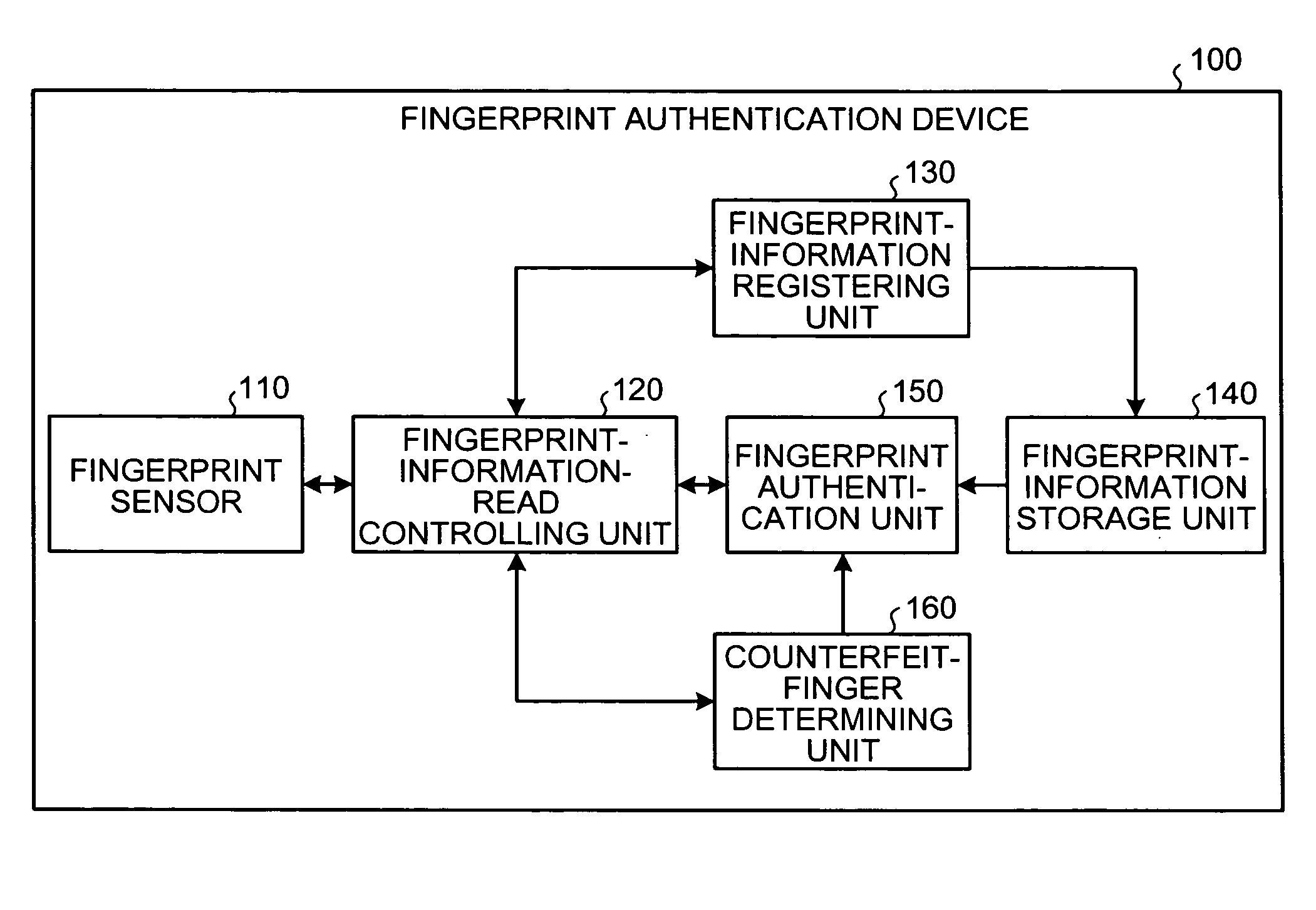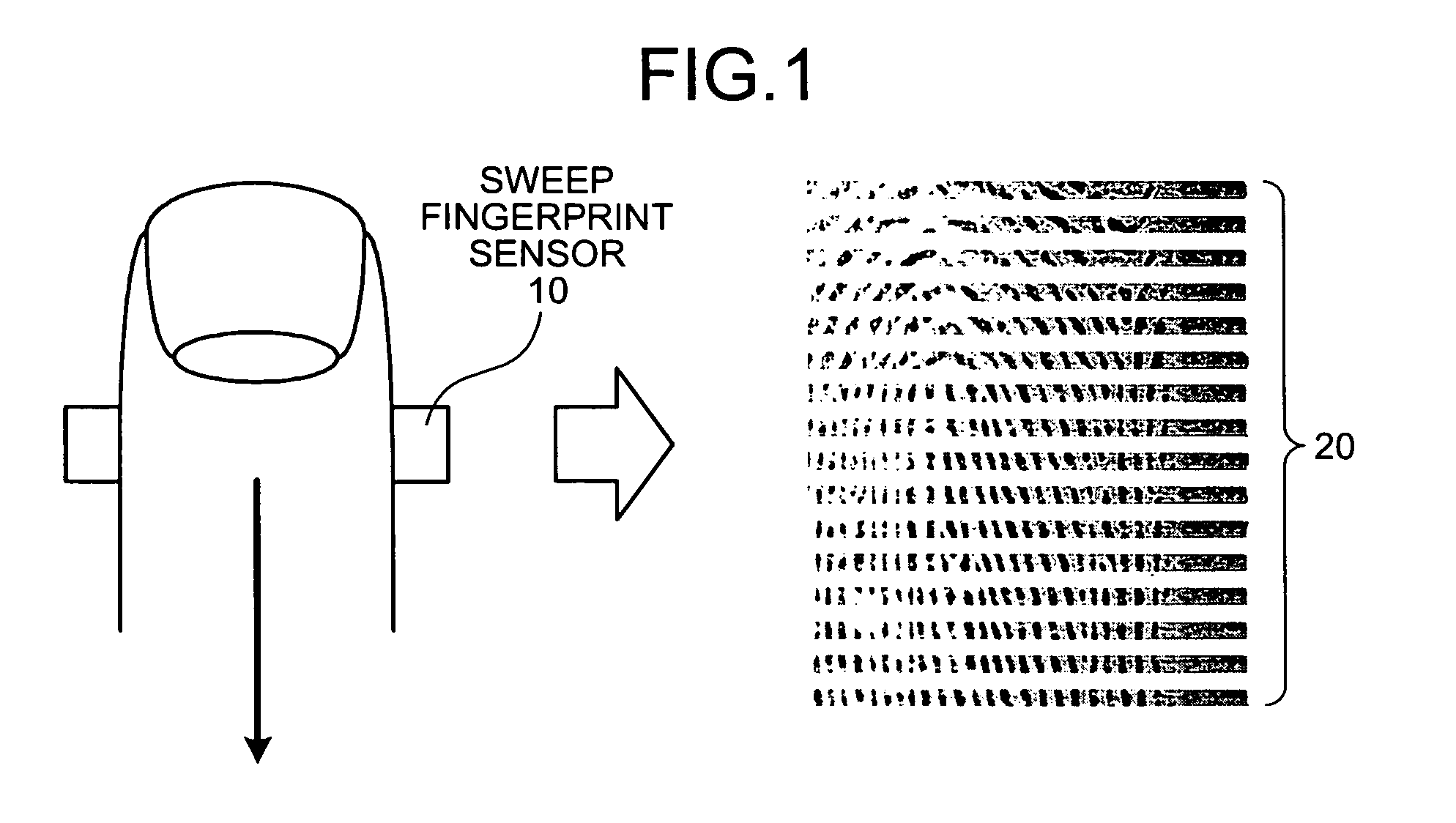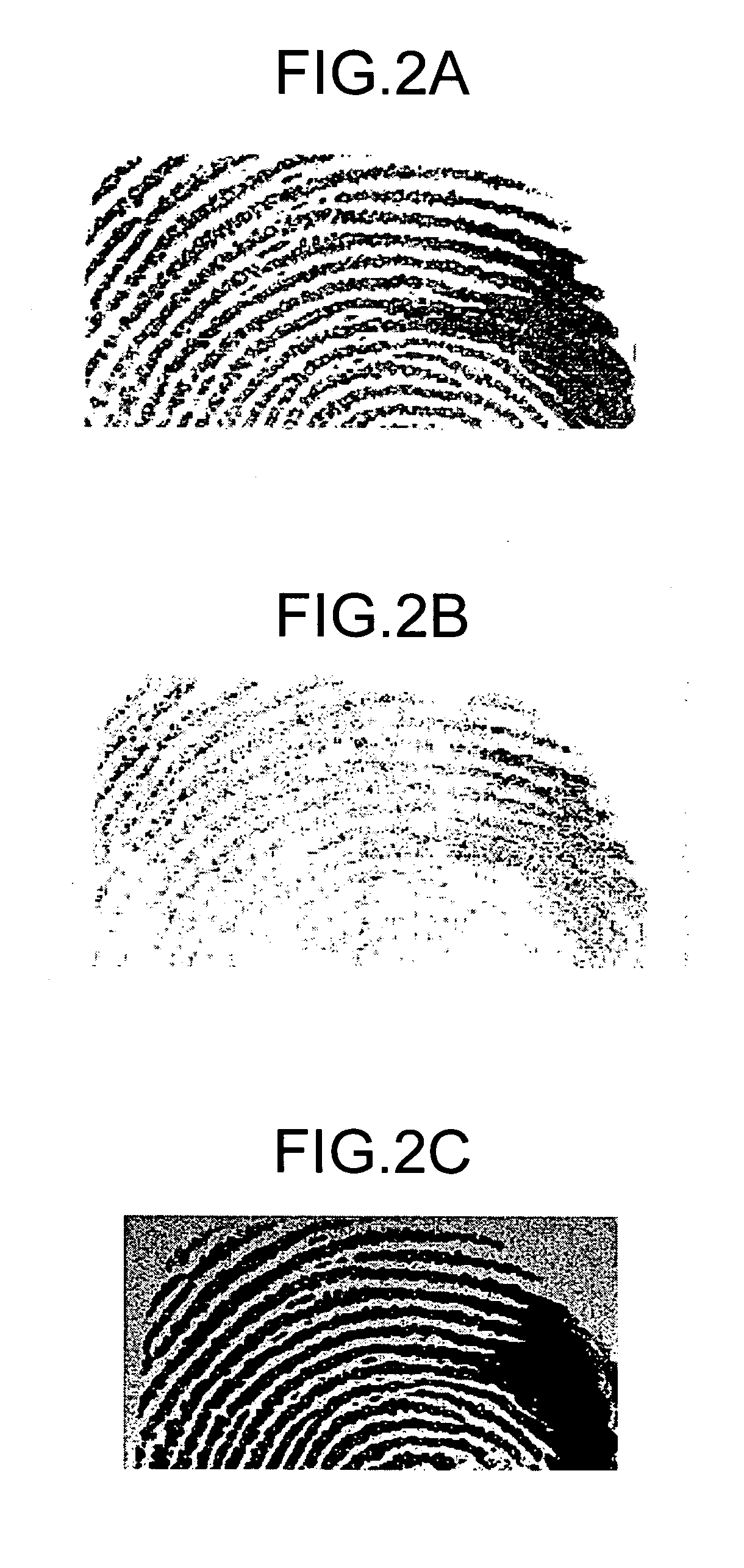Fingerprint authentication device and information processing device
a technology of fingerprint authentication and information processing, which is applied in the field of fingerprint authentication device and information processing device, can solve the problems of not allowing the use of counterfeit fingers in user authentication, making the detection of counterfeit fingers made of gummy materials very difficult, and a third person can be maliciously harmed
- Summary
- Abstract
- Description
- Claims
- Application Information
AI Technical Summary
Benefits of technology
Problems solved by technology
Method used
Image
Examples
first embodiment
[0024]FIG. 1 is a schematic for explaining image acquisition by a sweep fingerprint sensor 10 according to the present invention. The sweep fingerprint sensor 10 has a reed shape, and it acquires a plurality of images 20 at different locations of a finger when the finger is swept on it. Those images will be referred to as reed-shape image group. An entire image of a fingerprint can be acquired by combining the images belonging to the reed-shape image group 20.
[0025]The sweep fingerprint sensor 10 is configured to change sensitivity levels at a sufficiently high speed when taking images of fingerprint on a finger so that a reed-shape image group 20 is obtained at each of the sensitivity levels. An entire image at each of the sensitivity levels can be obtained by combining the images belonging to the reed-shape image group corresponding to each of the sensitivity levels.
[0026]FIGS. 2A to 2C depict examples of entire images of a fingerprint on a real finger, or a “living finger”, acqui...
second embodiment
[0051]Fingers can be wet due to sweating. For a wet finger the difference between the high-sensitivity image and the low-sensitivity image is very small, which makes the determination of whether the finger is living or counterfeit difficult. the present invention relates to a technology for correctly determining whether a finger is living or counterfeit even when the finger is wet.
[0052]FIGS. 7A to 7C are examples of sweat patterns in a fingerprint. When a sweating finger is swept on a sweep fingerprint sensor, the sweat on the finger is dragged due to a physical contact of the finger and the sweep fingerprint sensor so that a sweat pattern that elongates in the moving direction of the finger appears in the fingerprint. When such a sweat pattern appears in the fingerprint, the finger can be determined as a living finger, because a counterfeit finger can not sweat. Thus, if the methods of the first and second embodiments are combined whether a finger is living or counterfeit can be d...
PUM
 Login to View More
Login to View More Abstract
Description
Claims
Application Information
 Login to View More
Login to View More - R&D
- Intellectual Property
- Life Sciences
- Materials
- Tech Scout
- Unparalleled Data Quality
- Higher Quality Content
- 60% Fewer Hallucinations
Browse by: Latest US Patents, China's latest patents, Technical Efficacy Thesaurus, Application Domain, Technology Topic, Popular Technical Reports.
© 2025 PatSnap. All rights reserved.Legal|Privacy policy|Modern Slavery Act Transparency Statement|Sitemap|About US| Contact US: help@patsnap.com



